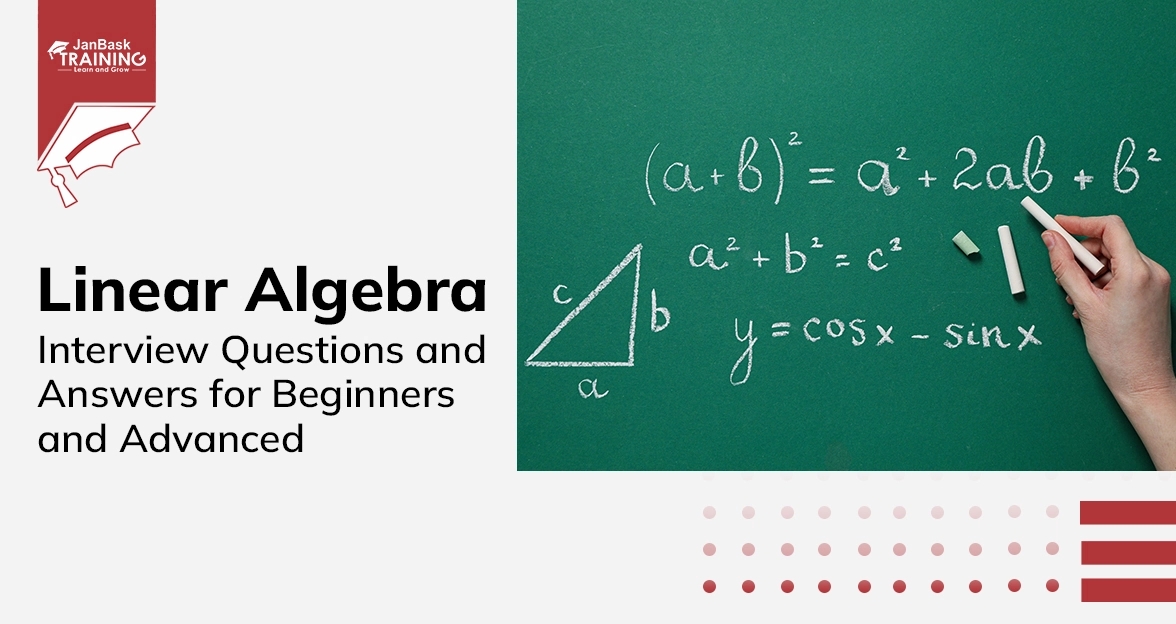 Halloween Offer : Upto 50% off on Popular Courses + 2 free self-paced courses - SCHEDULE CALL
Halloween Offer : Upto 50% off on Popular Courses + 2 free self-paced courses - SCHEDULE CALL

 Halloween Offer : Upto 50% off on Popular Courses + 2 free self-paced courses - SCHEDULE CALL
Halloween Offer : Upto 50% off on Popular Courses + 2 free self-paced courses - SCHEDULE CALL

The Python Workbook is helpful for people who want to learn and use Python, especially in data science. It covers everything from the basics, like how to write code and use different features, to more advanced stuff, like working with data and solving problems.
Learning from the Python Workbook is essential in data science because Python is a popular language. It's easy to read and use, and many useful tools (like NumPy and Pandas) make working with data a breeze. These interview questions and answers in the Python workbook will make learning Python easy and help you go from the basics to making you a pro for your Data science interview.
Ans: When working with Python, we typically write one statement per line, which Python assumes. You can use a semi-colon if you wish to include more than one statement on a line. To extend a statement to the next line, follow two rules.
This way, Python maintains readability and flexibility in your code structure.
Ans: In Python, program structure is denoted through indentation. You indent the nested code to nest a code block within a compound statement. This differentiates Python from other programming languages that utilize begin and end markers, such as curly brackets. Instead of explicit markers, Python's indentation-based approach enhances readability, encouraging a clean and visually intuitive code structure.
Ans: In Python, integers and floats are the primary numerical types, with long and complex numbers also available. Noteworthy facts include Python's automatic conversion to long integers when necessary, eliminating concerns about integer size limits. To find the maximum integer size in your Python version, you can use sys.maxint.
Additionally, Python supports mixed arithmetic, allowing operations between integers and floats. In such cases, Python promotes the result to a float for consistently handling numerical operations. Conversions between integer and float types are straightforward using the float constructor.
Ans: Lists and tuples are both container data types in Python, acting as dynamic arrays and indexable sequences. A mutable list allows extensions, deletion, insertion, and modification. It possesses a current length, maintains order, and supports heterogeneous elements.
In contrast, a tuple is immutable, meaning it cannot be altered once created. It shares similarities with lists regarding length and order but lacks mutability. Understanding these distinctions is crucial: lists accommodate dynamic changes, while tuples offer stability and security against accidental modifications.
Ans: To explore operators applicable to lists in Python:
Use dir([]) or dir(any_list_instance) to inspect items with unique names (leading and trailing double underscores) that provide clues about implemented operators.
Employ help([]) or help(list) at the Python interactive prompt for comprehensive information.
Use help(any_list_instance.some_method) for specific methods based on the items listed with dir(any_list_instance).
Ans: A list comprehension in Python is a concise way to generate a list from an iterable, such as a sequence or other objects that support iteration. The basic structure resembles the header line of a for statement inside square brackets. In a list comprehension, the for statement is prefixed with an expression and enclosed in square brackets. The template is as follows:
|
|
Where:
|
|
Iterable is any iterable, such as a sequence (e.g., list, string, tuple) or an unordered collection or iterator.
Ans: In Python, strings are ordered sequences of characters with the following characteristics:
Ans: In Python, a file object represents a file on a file system. When a file object is open for reading a text file, it becomes iterable, producing lines from the file when iterated over. Files can be opened in various modes:
Ans: In Python, the if statement is a compound statement used to execute code blocks conditionally. It may include optional elif and else clauses. The condition within an if: or elif: clause can be any Python expression, meaning it returns a value, even if that value is None.
In these conditions, the values "False," "None," numeric zero, an empty collection (e.g., list or dictionary), and an empty string are considered "false." Conversely, all other values are treated as "true." This flexibility allows for versatile and expressive conditional logic in Python.
Ans: In Python, the try:except: statement is used to catch exceptions thrown within a code block or from code called within that block. On the other hand, the raise statement is employed to throw an exception deliberately.
Exceptions, represented by classes or instances of exception classes, lead to a traceback and program termination if not caught. Standard exceptions are available, and you can define your own by creating an empty subclass of the Exception class.
This allows you to selectively catch specific exceptions, enhancing the robustness and customizability of error handling in your code. To explore standard exceptions, refer to the Built-in Exceptions documentation.
Ans: A function in Python possesses the following characteristics:
def function_name(arg1, arg2):
local_var1 = arg1 + 1
local_var2 = arg2 * 2
return local_var1 + local_var2
To call this function, you use:
result = function_name(1, 2)
Ans: In Python, you can set default values for function arguments using the equal sign and a specified value. For example:
|
|
def sample_func(arg1, arg2=None):
if arg2 is None:
arg2 = []
This ensures that mutable objects are not shared across multiple calls to the function.
Ans: In a function definition, arguments must follow this order, from left to right:
In a function call, arguments must adhere to the following order, from left to right:
Maintaining this order ensures proper interpretation of arguments and avoids ambiguity in function definitions and calls.
Ans: The "iterator protocol" outlines the requirements for an iterator object to be usable in an "iterator context," such as a for statement. Details about the iterator protocol can be found in the standard library reference under Iterator Types.
One can define a generator function to create an object that adheres to the iterator protocol. A generator function contains one or more yield statements. If a function includes at least one yield statement, calling that function results in a generator iterator—a type of object that follows the iterator protocol. This makes it suitable for statements and other iterator contexts in Python.
Ans: A class variable in Python is shared by all instances of a class and even by all entities with access to the class (object).
"Normal" methods, or instance methods, receive the instance as their first argument and are defined using the def statement within a class statement.
On the other hand, class methods receive the class as their first argument. They are defined by creating a routine/instance method and using the class method built-in function. Here's an example:
class ASimpleClass(object):
description = 'a simple class'
@classmethod
def show_class(cls, msg):
print('%s: %s' % (cls.description, msg))
This approach with the class method simplifies defining methods that interact with the class itself rather than class instances.
For those seeking additional support and a guided learning experience, JanBask Training's Python courses offer expert-led instruction and practical projects. This curated learning environment ensures not only mastery of Python but also the practical application of these skills in complex data science scenarios. Aspiring professionals can rely on JanBask Training to provide a structured and comprehensive approach to Python mastery in the context of data science.

Statistics Interview Question and Answers


Data Warehouse Interview Question And Answers in 2024

Cyber Security

QA

Salesforce

Business Analyst

MS SQL Server

Data Science

DevOps

Hadoop

Python

Artificial Intelligence

Machine Learning

Tableau
Download Syllabus
Get Complete Course Syllabus
Enroll For Demo Class
It will take less than a minute
Tutorials
Interviews
You must be logged in to post a comment